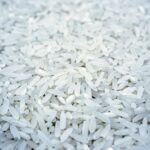The Philippines, an archipelago blessed with abundant water resources, has relied on hydroelectricity as a major source of renewable energy for over a century. From its early beginnings during the American colonial period to its current role in the nation’s sustainable energy strategy, hydroelectric power has significantly shaped the country’s economic and industrial development. However, challenges such as environmental concerns and climate change continue to affect its expansion.
Early Beginnings: Laying the Foundations (1900s – 1930s)
Hydroelectricity in the Philippines traces its roots back to the early 20th century, when small-scale hydroelectric plants were first constructed to supply power to towns and industries. The first recorded hydroelectric power plant, the Botocan Hydroelectric Plant, was built in 1913 in Majayjay, Laguna. During the American colonial period, the government recognized the potential of hydropower and began developing small-scale facilities to electrify local communities. However, it was not until after World War II that large-scale hydroelectric projects took center stage.
Post-War Expansion and Government Initiatives (1940s – 1960s)
Following the World War II, the Philippine government prioritized rebuilding its energy infrastructure. The National Power Corporation (NAPOCOR), established in 1936, spearheaded the development of major hydroelectric projects. One of the most significant achievements during this period was the construction of the Ambuklao Hydroelectric Plant in Benguet, completed in 1956. At the time, it was the largest hydroelectric facility in Southeast Asia, capable of supplying electricity to key regions. This was followed by the completion of the Binga Hydroelectric Plant in 1960, further strengthening the country’s renewable energy capacity.
The Golden Age of Hydropower (1970s – 1990s)
The 1970s marked a turning point for hydroelectricity in the Philippines as the government responded to the global energy crisis by investing heavily in renewable energy. Several large-scale hydroelectric projects were developed to meet the increasing demand for electricity. The Pantabangan Hydroelectric Plant in Nueva Ecija and the Magat Hydroelectric Plant in Isabela became crucial sources of power for Luzon. Additionally, the Caliraya-Botocan-Kalayaan (CBK) Hydropower Complex was expanded to optimize energy generation.
In the 1980s, hydroelectric projects also spread to the southern regions of the country. The Pulangi Hydroelectric Plant in Mindanao played a key role in stabilizing power supply in the region. By the 1990s, hydroelectricity accounted for a significant portion of the Philippines’ total electricity production, proving its viability as a reliable and sustainable energy source.
Privatization and Modernization (2000s – Present)
The turn of the 21st century brought major reforms in the Philippine energy sector. In 2001, the Electric Power Industry Reform Act (EPIRA) was enacted, leading to the privatization of many hydroelectric plants. While this shift aimed to increase efficiency and attract private investments, it also raised concerns about the accessibility and affordability of electricity. Despite these challenges, the government continued to promote renewable energy development.
One of the most ambitious projects of this period was the San Roque Dam, which began operations in 2003. With its multipurpose function of providing electricity, irrigation, and flood control, the dam became a crucial infrastructure project. In addition, the Renewable Energy Act of 2008 encouraged further investment in small and mini-hydro plants, which had a lower environmental impact compared to large-scale dams. As of the 2020s, the Philippines has over 3,600 MW of installed hydroelectric capacity, with ongoing projects aimed at further expanding production.
Hydropower regulations
Hydroelectric power development in the Philippines is governed by a comprehensive legal and regulatory framework aimed at promoting renewable energy while ensuring environmental sustainability and public welfare. Key regulations include:
Republic Act No. 7156 (Mini-Hydro Law): Enacted in 1991, this law provides incentives for the development of mini-hydroelectric power projects with capacities between 101 kilowatts and 10,000 kilowatts. Incentives include special tax rates, income tax holidays, duty-free importation of equipment, tax credits for domestic capital equipment, and value-added tax (VAT) exemptions.
Republic Act No. 9513 (Renewable Energy Act of 2008): This act promotes the development, utilization, and commercialization of renewable energy resources, including hydropower. It offers fiscal and non-fiscal incentives to renewable energy developers, such as tax exemptions and subsidies, to encourage investment in the sector.
Department Circular No. DC2021-06-0017: Issued by the Department of Energy (DOE), this circular establishes the Hydropower Safety, Health, and Environment Code of Practice. It sets guidelines to ensure the safety, health, and environmental protection in hydropower operations, aligning with the Renewable Energy Safety, Health, and Environment Rules and Regulations (RESHERR).
National Water Resources Board (NWRB): The NWRB, an agency under the Department of Environment and Natural Resources, is responsible for the regulation and management of water resources in the Philippines. It issues permits and licenses for water use, including those for hydropower projects, ensuring that water resources are utilized sustainably and equitably.
These regulations collectively create an enabling environment for the development of hydropower in the Philippines, balancing the need for renewable energy expansion with environmental conservation and public interest.








